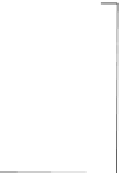Environmental Engineering Reference
In-Depth Information
measurements by forcing them to be consistent with the knowledge engineers have
about the plant, such as mass and energy conservation laws. Observers are soft-
sensing algorithms which infer signals that cannot be measured (not at all or not
frequently enough). They generate new measurements that can be used to improve
plant operation. Even if process observation is based on passive techniques, they
help engineers improve their vision of the process states and therefore corrective
actions can be taken. Some observation techniques are described in Chapter 2 of
this topic. Applications of process observation techniques to flotation columns have
been reported by Bergh
et al.
[61, 62].
Once the on-line measurements have been improved by the process observation
layer, they may be used to continuously adjust the regulatory controller set points to
provide adequate process control actions. Through feedback and feedforward, ad-
vanced process control permits the maintenance of measured variables at selected
set points despite the presence of disturbances, such as changes in ore properties.
A consequence of the process stabilization around a selected operating point is a
decrease in process variability usually resulting in a smoother and less costly opera-
tion. Robustness and reliability should be the primary focuses regarding any choice
of control algorithms. The intermediate control level aims at maintaining process
variables having a strong influence on metallurgical results (grade and recovery),
such as froth depth, bias, froth parameters, air hold-up or bubble surface area flux,
etc.
, in a bounded region,
i.e.
, an acceptable operating zone where it is possible to
handle the process and reach production objectives. This level is often called stabi-
lizing control. Applications of process control to flotation columns are described in
the following sections.
The fourth layer is the process optimization step [63], sometimes called supervi-
sory control. It consists in continuously selecting set points of the control layer to
optimize a control objective. The objective is usually related to profit maximization.
Economic
factors
Regulatory
Controller #1
Regulatory
Controller #n
Process
Controller
Real-time
optimization
Process
Actuators
(Instrumentation)
Sensors
(Instrumentation)
Filtered
measurements:
Primary and
secondary
variables
Filtered
measurements:
Secondary
variables
Process
observation
Figure 6.10
Control hierarchy














































Search WWH ::

Custom Search